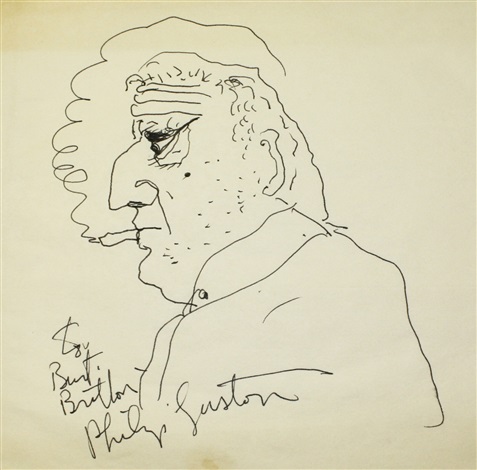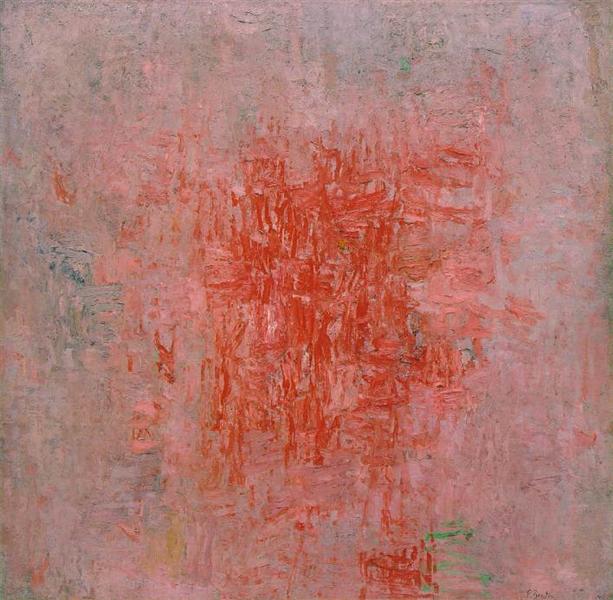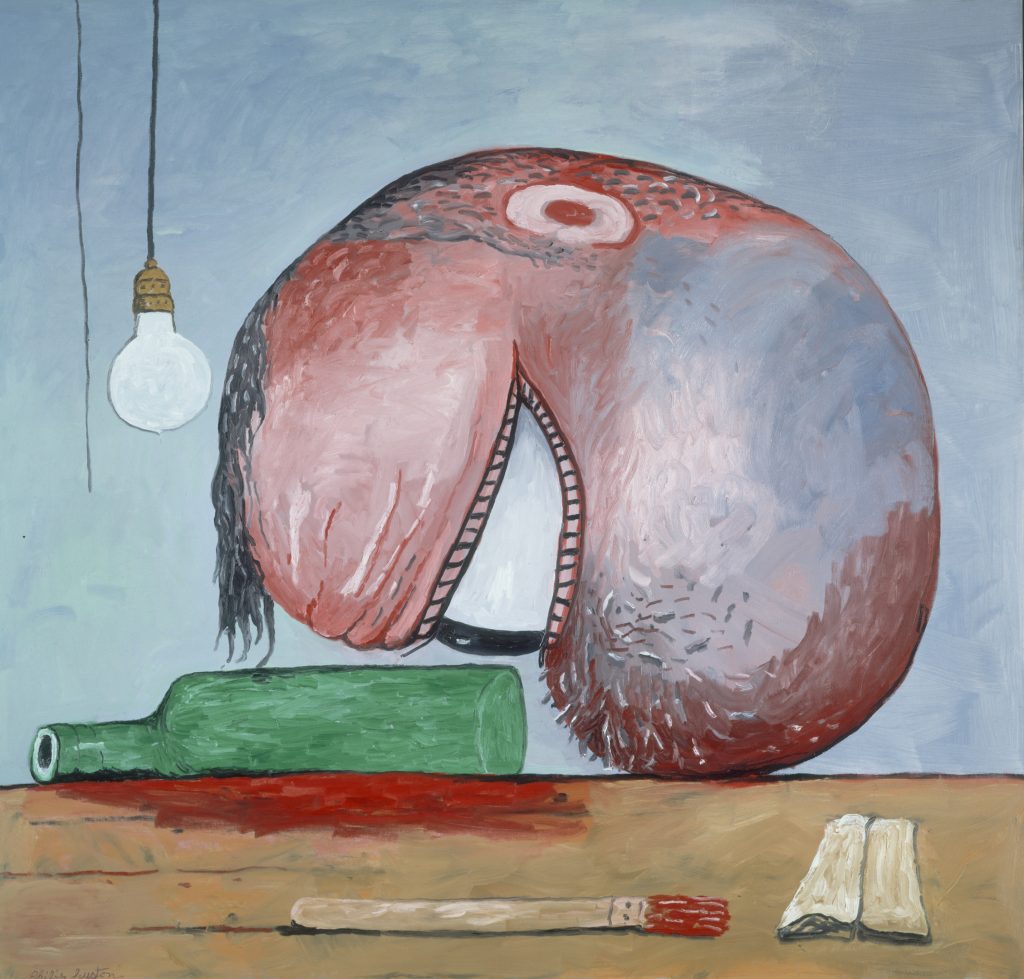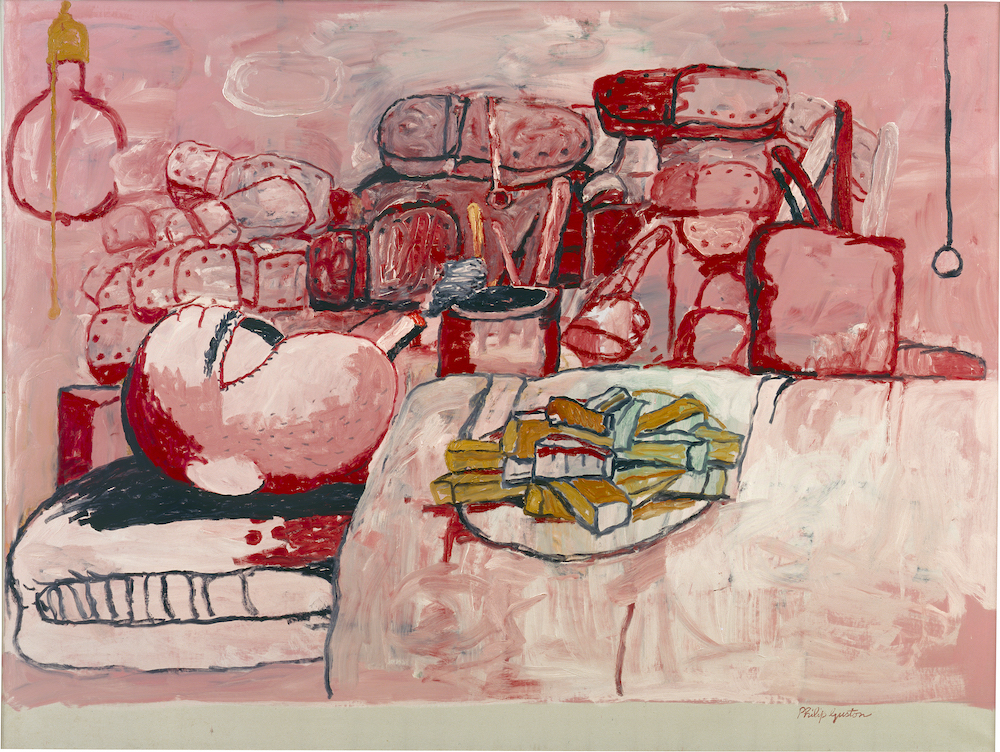
Philip Guston was born in Montreal in 1913 and moved to Los Angeles with his family when he was young. When he was 10 years old, his father hung himself. Philip found his body in their shed. This obviously had a profound impact on his life. As a kid, his preferred setting to draw in was inside a small closet lit by a hanging lightbulb.
When Guston was 14, he began painting when he started attending the LA Manual Arts High School. While he was there, he published a paper alongside Jackson Pollock that got them both expelled. After that, aside from a one-year scholarship at Otis Art Institute, he was mostly a self-taught artist. In his early career, Guston painted many murals.


He moved to New York in 1935 and began to teach and lecture in universities in 1941 at the School of Art and Art History at the University of Iowa. He taught there until 1945. Other schools he taught at are Washington University in St. Louis, New York University, the Pratt Institute, and Boston University where he ran a monthly graduate seminar from 1973 until 1978.
In the 1950s, Guston moved away from mural painting and became a first-generation abstract expressionist (although he preferred the term New York School for the movement). In the late 60s, he began to get frustrated with abstraction and helped lead the transition from abstract expressionism to neo-expressionism. This transition led Guston’s style to become representational and cartoonish, which was widely misunderstood by critics and led him to isolate himself in his little art world. After 1968 his palette became limited and his pieces were very existential and sad.


I really really like his work, especially his later stuff. It’s so funky and I just really love it!!